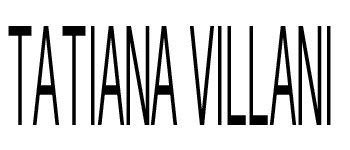Sincronizzazione

serie di fotografie digitali, 2011
(please scroll down for english version)
Il tempo è una delle dimensioni in cui ci muoviamo. Trattandosi di una dimensione per essere concepita e comunicata ha bisogno di un’unità di misura codificata e condivisa.
Qui si incontrano i primi problemi, l’unità di misura del tempo cambia col cambiare della società che la stabilisce.
C’è il tempo delle realtà rurali scandito dal ritmo delle stagioni, il tempo biologico della donna (o il tempo delle maree) scandito dalle lune o il tempo della società contemporanea occidentale diviso in anni, mesi, giorni, ore e cosi via.
Mi interessa in particolare il rapporto che si crea tra gli strumenti di misurazione del tempo e la persona che li guarda e utilizza.
Dal punto di vista scientifico esistono varie teorie che cercano di spiegare e quantificare il tempo come grandezza fisica.
Tra queste alcune lo legano con vari algoritmi alle pulsazioni (movimenti esplosivi-implosivi) all’interno dell’atomo oppure a movimenti più complessi che tengano conto anche della forza di gravità, ma che comunque possono essere trasformati con formule matematiche nell’unità di misura denominata “secondo”.
Ho associato questo movimento ritmico (che viene così definito come tempo) visivamente a uno strumento di misurazione che si usa per quantificarlo, in particolare un orologio (circolare e con le lancette) che evidenzi questo andamento ciclico.
Da sant’ Agostino in poi nel pensiero cristiano il tempo è concepito come lineare-progressivo e non più circolare-ciclico come nel mondo pagano.
Dal punto di vista fisico-sperimentale: ”il tempo è ciò che si misura con gli strumenti adatti”.

Nella mia opera appare un oggetto in cui non è immediata l’ evidenza che non si tratta di uno strumento adatto alla misurazione, ma è invece un oggetto aperto alle riflessioni sulla misurazione.
La banalità di un’immagine quotidiana è spezzata da un’anomalia nelle lancette.
______________________________________________________________________________
Sincronizzazione (Synchronization)
Digital Photography’s serie, 2011
The time is one of the possible dimensions in wich we move. Since this is a dimension to be designed and communicated needs unit extent codified and shared.
Here we encounter the first problems, the unit of measurement of time changes
with the change of the society that sets that standard.
There is the time of the rural reality marked by the rhythm of the seasons, the
Women’s biological time (or the time of the tides) marked by the moons or time of contemporary Western society divided into years, months, days, hours and so on.
I am particularly interested in the relationship created between the instruments of
timing and the person who looks at them and uses.
From the scientific point of view there are several theories that attempt to explain and quantified the time as a physical quantity.
Some of them bound it with different algorithms to the pulse (implosive-explosive movements) on the inside of the atom, or a more complex movements that account of the force of gravity, but that can be processed using mathematical formulas in the unit called “second”.
I associated this rhythmic movement (which is thus defined as time) visually to a measuring instrument which is used to quantify it, in particular a clock (circular, with hands) that shows this cyclical praxis.
From Sant ‘Agostino on in Christian thought, time is conceived as something linear and progressive and not anymore as something circular-cyclical as in the pagan world.
In terms of physical-experimental :”time is what is measured with the right tools. “
In my work is an item in which is not immediate the evidence that it is not a suitable tool for the measurement, but is instead an object that open to reflections on the measuring.
The banality of everyday image is broken by an anomaly in the hands, we can see more than three of them (hours, minutes, seconds).



